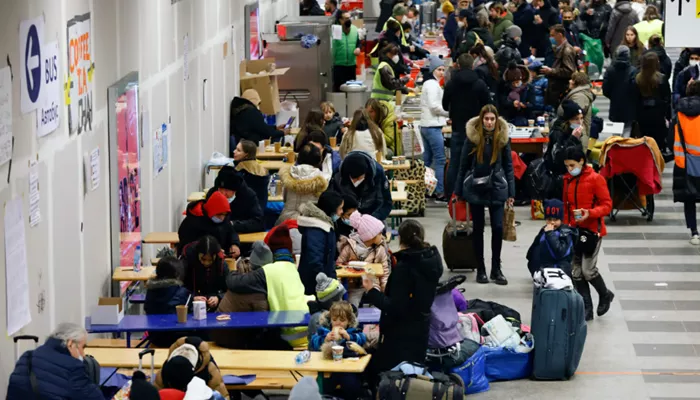Deportations have been a key element of immigration enforcement in the United States. Over the past few decades, their numbers have fluctuated significantly. Former President Trump aimed to intensify this policy, proposing mass deportations for individuals lacking legal status. Recent studies on previous increases in immigration enforcement highlight the effects of deportations on labor markets, crime rates, and civic life. Current trends in deportations raise questions about the challenges and consequences of expanding these practices.
Resource and Logistical Challenges
The challenges of implementing mass deportations are considerable. However, even small changes to deportation policies could have significant effects.
Who Can Be Deported?
Deportation is the process of removing a foreign national from the U.S. for breaking immigration laws. Non-citizens may face deportation if they commit crimes, are deemed threats, or lack valid visas. As of 2022, an estimated 11 to 12 million undocumented residents were living in the U.S., a number that has remained stable over the past decade. This figure may have increased due to more unauthorized entries and a high number of temporary visa overstays.
Recent Immigration Surge
The last two years have seen an unprecedented influx of around 4 million individuals seeking asylum or entering the U.S. under a temporary humanitarian parole program. These individuals are currently not in violation of immigration laws, but many are likely to lose their asylum petitions or face expired parole within the next year or two, putting them at risk of deportation.
Historical Deportation Trends
The highest annual deportations in recent years occurred during President Obama’s early administration, reaching about 400,000 per year. However, these statistics can be misleading, as they include both long-term residents and individuals turned back at the border. Actions by the Border Patrol and Immigration and Customs Enforcement (ICE) target different groups and have different implications for local economies and communities.
ICE and Interior Removals
Most deportations are processed by ICE, which handles both border and interior removals. During Obama’s first term, interior removals averaged over 200,000 annually. The Trump administration averaged about 80,000 interior removals each year, significantly lower than Obama’s figures and far from the mass deportation rhetoric. The Biden administration has continued this trend, with even fewer interior removals.
Economic Consequences of Deportations
Deportations, even on a modest scale, have economic impacts. Immigrants are vital to the U.S. labor force, and their removal disrupts local economies. Research on immigration enforcement during the Secure Communities program (2008-2014) shows that the deportation of 500,000 immigrants not only affected foreign workers but also reduced employment for an estimated 44,000 U.S.-born workers. Many immigrants hold jobs that complement rather than compete with American workers, meaning their removal can disrupt various sectors.
Crime Rates and Deportation
While crime reduction is often cited as a reason for increased deportations, studies show that higher deportation rates do not lead to reduced crime. Research indicates that immigrants generally have lower crime rates than U.S.-born individuals. Although targeting immigrants with criminal convictions could theoretically reduce crime, a study on Secure Communities found no evidence that deportations decreased property or violent crime. Increased focus on deportation may deter immigrants from cooperating with authorities or reporting crimes, leading to broader community impacts.
Broader Impacts of Immigration Enforcement
The effects of heightened immigration enforcement extend beyond those deported and their families. It creates a “chilling effect” that affects immigrant participation in the labor market, school attendance, and access to healthcare. For example, while only individuals arrested had their immigration status checked under Secure Communities, even those not targeted felt fear about daily activities. This anxiety led to decreased participation in safety net programs among eligible families.
Immigration Court Backlog
The logistical challenges of mass deportations are substantial. Spending on ICE has nearly tripled in the past two decades, with an annual budget of around $10 billion. In contrast, funding for the immigration court system, responsible for adjudicating removal and asylum claims, has not kept pace. This has resulted in a backlog of over 3 million cases and years of delays within the immigration court system.
Conclusion
As the U.S. grapples with the complexities of immigration enforcement and deportations, understanding the implications of these policies is crucial for informed discussions about the future of immigration in the country.
Related topics:
- Bust of Chinese Burglary Gang Raises Concerns About Crime Increase in Malaysia with Visa-Free Policy
- What Is a Special Immigrant Visa? Understanding How an FBI Terror Suspect May Have Entered the US
- Why Have Republicans Changed Their Stance on Immigration?


